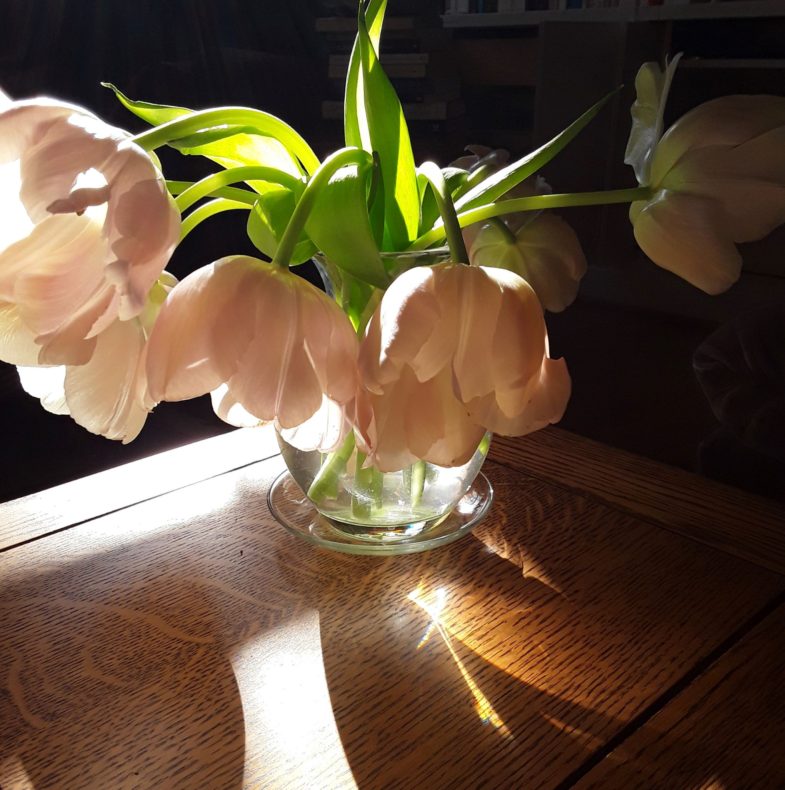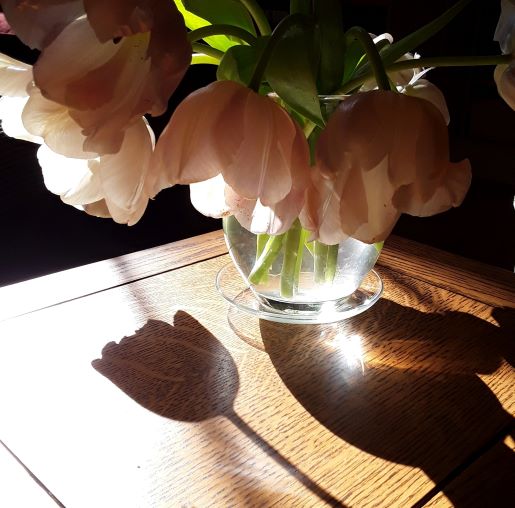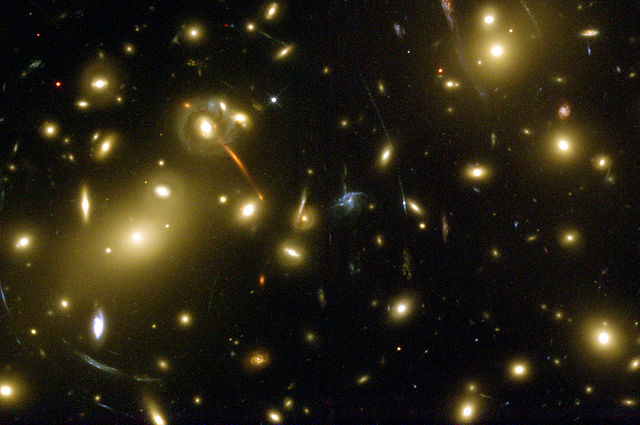
That photo there was a lucky shot. I was sitting on the couch minding my own business and looked up, and the sunlight had hit the glass vase and the water in it and had gone nuts with optics. It went right through the tulip petals so that for me, sitting there, they were translucent — which is Latin for, light went right through them. It made reflections on the dish of the trees outside the window. And then the light got fancy and made those brilliant streaks. They’re called caustics.
Caustics aren’t really what the title says, a science metaphor, a word whose meaning in science is a metaphor that inadvertently helps us poor beings live our lives — like tidal locking, or resonance, or scale mismatch. But the word, “caustics,” is pretty and a little poetic; so the title not so much a lie as an extrapolation of metaphor into general poetry.
Caustic is kaustikos, Greek for burning. I’ll bet where that bright streak hit the table, the wood was warm. Acid is caustic, humor can be caustic; both burn.
You’ve seen caustics. They’re the brilliant streaks flashing around on the bottoms of swimming pools and shallow rivers. Light at sundown during dinner goes through a wine glass and makes a caustic on the table. And astonishingly, caustics are out in space. I’ll get to that in a minute.

Back to my tulips in their glass bowl. Light was not only making caustics and going through now-translucent petals, it was also being blocked by others and making shadows. I say this so I can add this picture, and I add this picture just because it’s pretty and because light is so talented.
Anyway. I’ve read and read about the physics of caustics, trying to figure out what the light is actually doing. Here’s my simple-minded understanding: pretend light is a ray and it’s hitting some medium — glass or water or both — and getting bent. It’s not bouncing off — that’s reflection — but it’s changing its trajectory a bit, it’s refracting, going through the glass or water and heading off at some angle depending on the medium. Refraction is usually illustrated with that pencil-in-the-glass-of-water picture: where the pencil hits the water, it appears to bend.
Now pretend light is a lot of parallel rays, all hitting some medium. And if the medium is uneven or moving, different rays will refract at different angles, and some of them will bunch up and make spots or streaks of brightness — and those are caustics.

Out in the universe, gravity acts like a medium that refracts light. Cosmic caustics begin as light from something, a star or galaxy, that’s behind another galaxy. And as the light passes that galaxy, it’s caught in the galaxy’s gravity and bent. Astronomers call this gravitational lensing. I think it’s just poetry.
I mean, here we are going about our own lives and light is just rampaging around. We can’t even see it but without it we couldn’t see at all. It makes rainbows, changes colors, announces the infinity of stars. It reflects, refracts, diffracts, all days, every day, little glories everywhere.
___________
I took the tulip pictures. The caustic universe was from NASA/ESA.
This is the brilliant streak of burning light I needed today, thank you Ann!
Ann, you have been so good for so long, and this concise piece demonstrates it. Different things engage the transmission of my writing engine on different days. Some days it’s something I read that makes me say to myself, Sit down and do something that good. Today was one of those days, and this was one of those pieces. Thank you, my friend.
Whew, Dale, I’m fanning myself rapidly, flap flap. Coming from you, this is SUCH a compliment. And you’re generous to say so. Thank you!